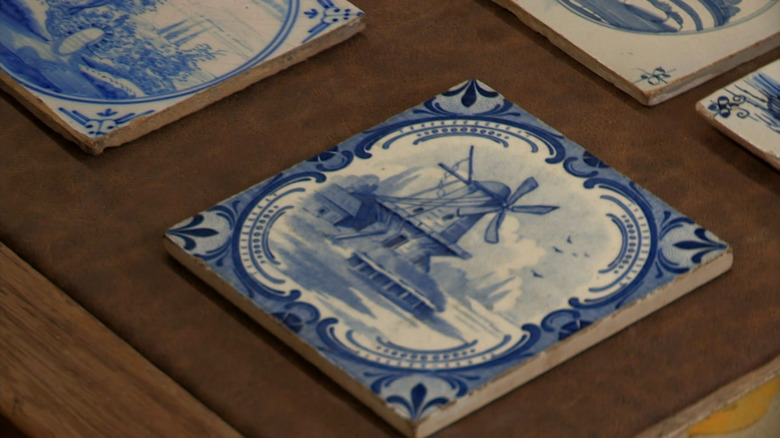Storage Wars Season 15: The Unlikely Treasure That Helped Ivy And Pops Cash In Big
"Storage Wars" cast member Ivy Calvin spends his life searching for treasure. In Season 15, Episode 19, titled "California Knows How to Pottery," he and his son Ivy Jr., aka Pops, found some in an abandoned unit in Rosamond, California. Here, Ivy drives his son's RV to an auction where the Calvin men more than double their investment bid thanks to six pieces of centuries-old tile.
Father and son bid $325 on their locker, and they almost immediately earn back 11 times what they paid. Once inside, they discover assorted tools, over $2,000 of Masonic jewelry and books, and a key-cutting machine valued at $850. The Calvins have already racked up around $3,640 of value in their unit when Pops stumbles upon something really special: six ceramic tiles carefully preserved in bubble wrap. Ivy Sr. predicts that tiles in bubble wrap are always worth something, so the two seek out an expert to see how much their treasure will net them.
The Calvins take their discovery to Scott Wells at Wells Tile & Antiques and he provides context for their find. The pieces are antiques more commonly referred to as Delft tiles. They hail from the Netherlands where artists have created them since the 1500s. Wells estimates that the six tiles Ivy and Pops brought in were made during the 1600s or early 1700s, where they were hand-painted with a glaze and fired in a kiln. He values them at around $700.
These antiques are still in style today
Delft tiles like the ones found by Ivy Calvin and his son are still circulating today — and the ones the Calvins found in their locker are more valuable than other options. Back when artists were first creating the tiles, they could either hand-paint them or use a stamp to create a textured look, and the hand-painted tiles are worth more. As Pops says, "A little more effort means a little more money."
Antique Delft tiles don't run cheap, as the Calvins learn during their consultation. But for those who can afford them, they make great additions to modern interior design. Back in the 1500s, the tiles were originally created to festoon sooty fireplaces: Since the tiles are impervious to heat and easy to wipe down, tiling a fireplace with Delftware was not only functional but fashionable. As homeowners realized the tiles were also waterproof, they began to accessorize other parts of their homes with them.
Delftware fell out of fashion towards the end of the 18th century and production slowed soon after. But today, tiles in the Delft style can be purchased on sites like Etsy and Wayfair, and are often used to create kitchen backsplashes or incorporated into bathroom decor. Some modern artists are even subverting the style by creating racy images that pay homage to the irreverent iconography found in the originals. But for the Calvin men, Delft tiles will always be remembered as a lucrative find.

